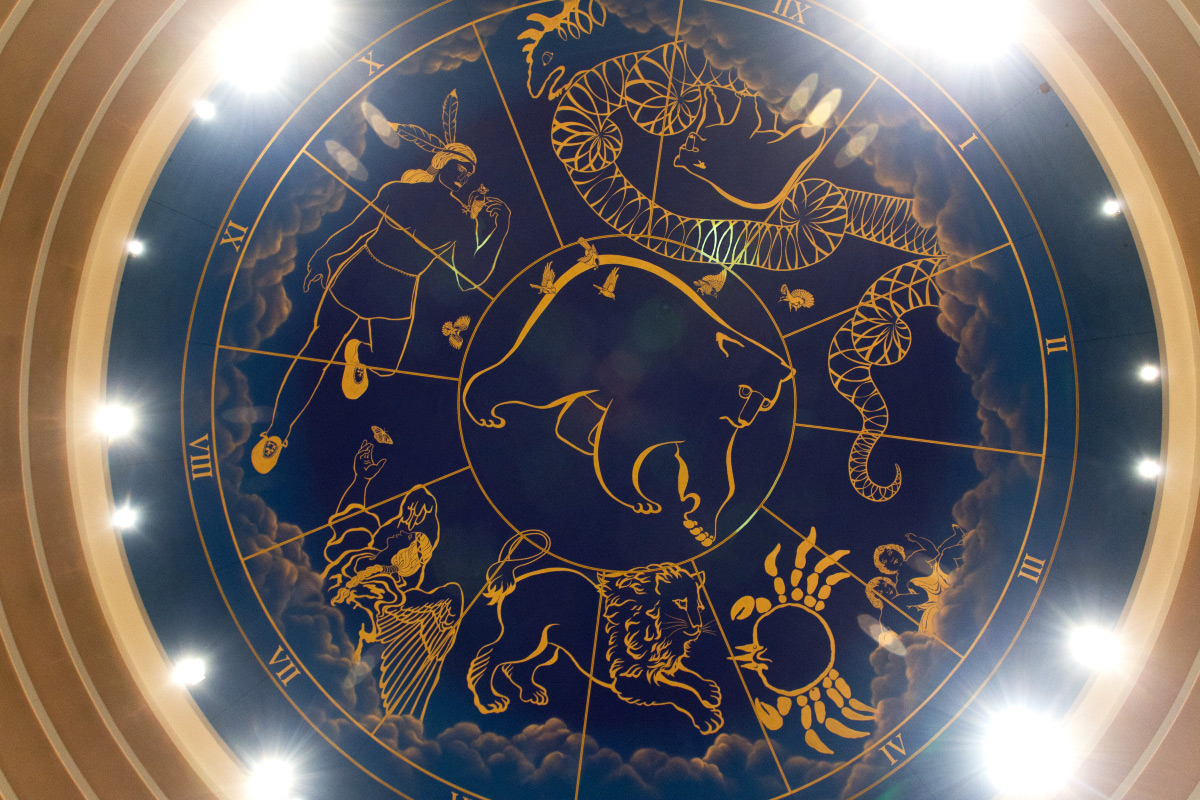Spring Sky Mural
Spring Sky Mural by Sharon McCann is one of over 35 public artworks on display across the City of Mississauga.

Sharon McCann, 1986
Cast aluminum, paint, and concrete
Mississauga Council Chamber
About the artwork
This spectacular 30 metre diameter domed ceiling mural is located in Mississauga’s Council Chamber. Designed by Canadian artist Sharon McCann, the work was installed over six weeks by a team of artists, including Nick Kosonic, Carolyn McGill, Lynda G. Smith, Fred Fiveash, Chris Glady, Denise Therien and Tom Reid.
Spring Sky Mural utilizes the imagery of constellations to depict the artist’s understanding of the First Nations legend of The Great Bear and Six Hunters. The hunter’s hands and hair are borrowed from Alphonse Mucha, the master of art nouveau, and the faces recall the work of Julius Shiller, a seventeenth century German celestial mapmaker. The work is lit by 120 fibre optic strands, which allow the work to twinkle.
Although McCann completed her design by consulting historical records, we would today consider this artwork to be an example of cultural appropriation. When visiting this work, we encourage viewers to acknowledge the ways in which artists engage with cultural traditions and communities.
Clayton Windatt in CARFAC’s Indigenous Protocols for the Visual Arts, writes:
Cultural appropriation, or the “misappropriation” of culture, is a concept dealing with the representation of cultural elements, in part or explicitly, from a minority culture by members of a dominant culture. It is distinguished from cultural exchanges due to the imbalance of power and a lack of consent from both groups. Cultural appropriation occurs when privilege goes unchecked, violating collective intellectual property rights of an originating, minority culture. It is often a by-product of colonialism and oppression, commonly referenced by Indigenous cultures living under colonial rule. An individual is committing an act of cultural appropriation when they depict any other cultural group’s traditions, fashion, symbols, language, and songs, or when they attempt to represent the views, beliefs, or ideologies of a culture they are not part of themselves. This is done often without any understanding of the original cultural context and against the expressly stated wishes of members of the originating culture.